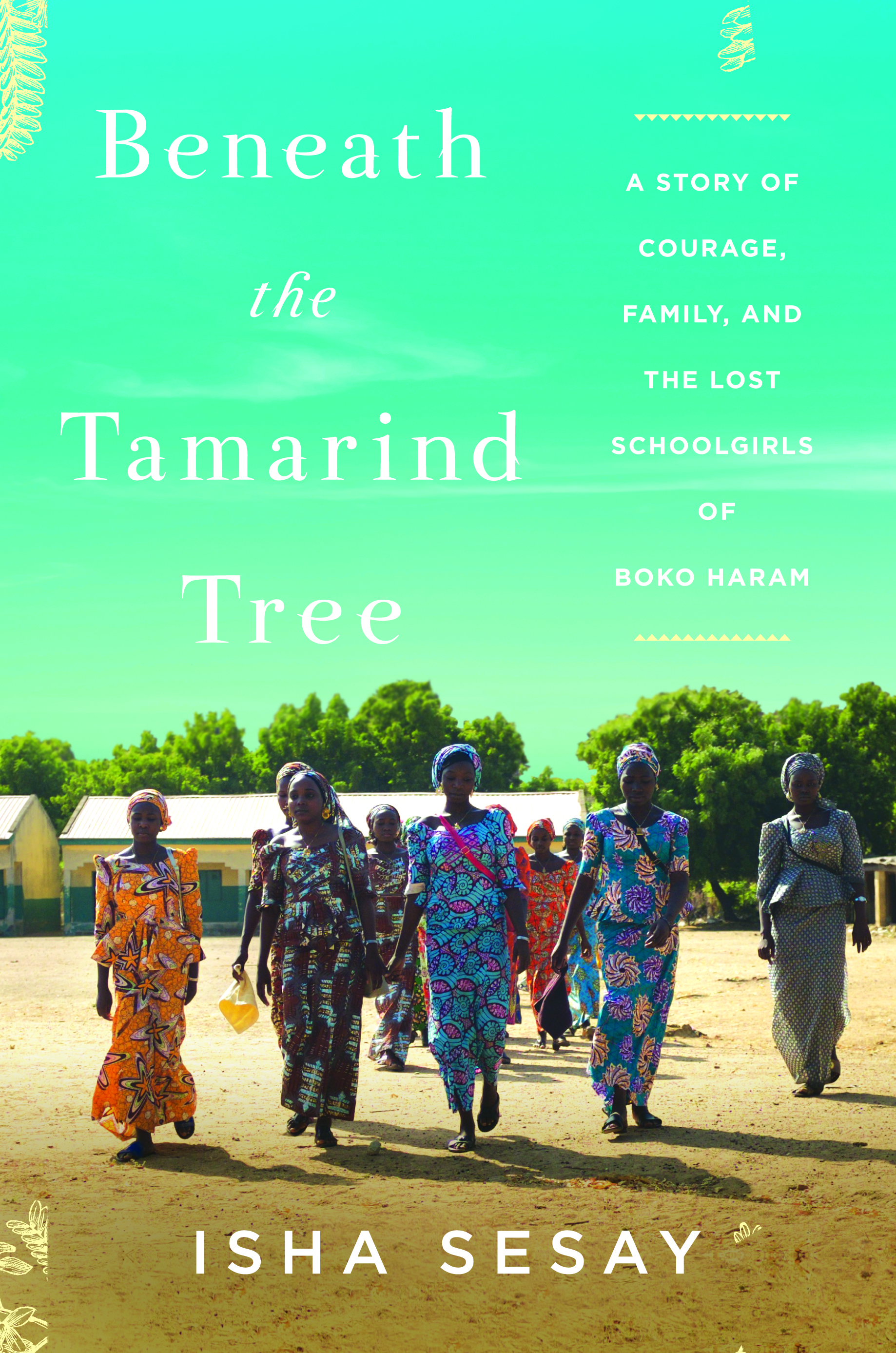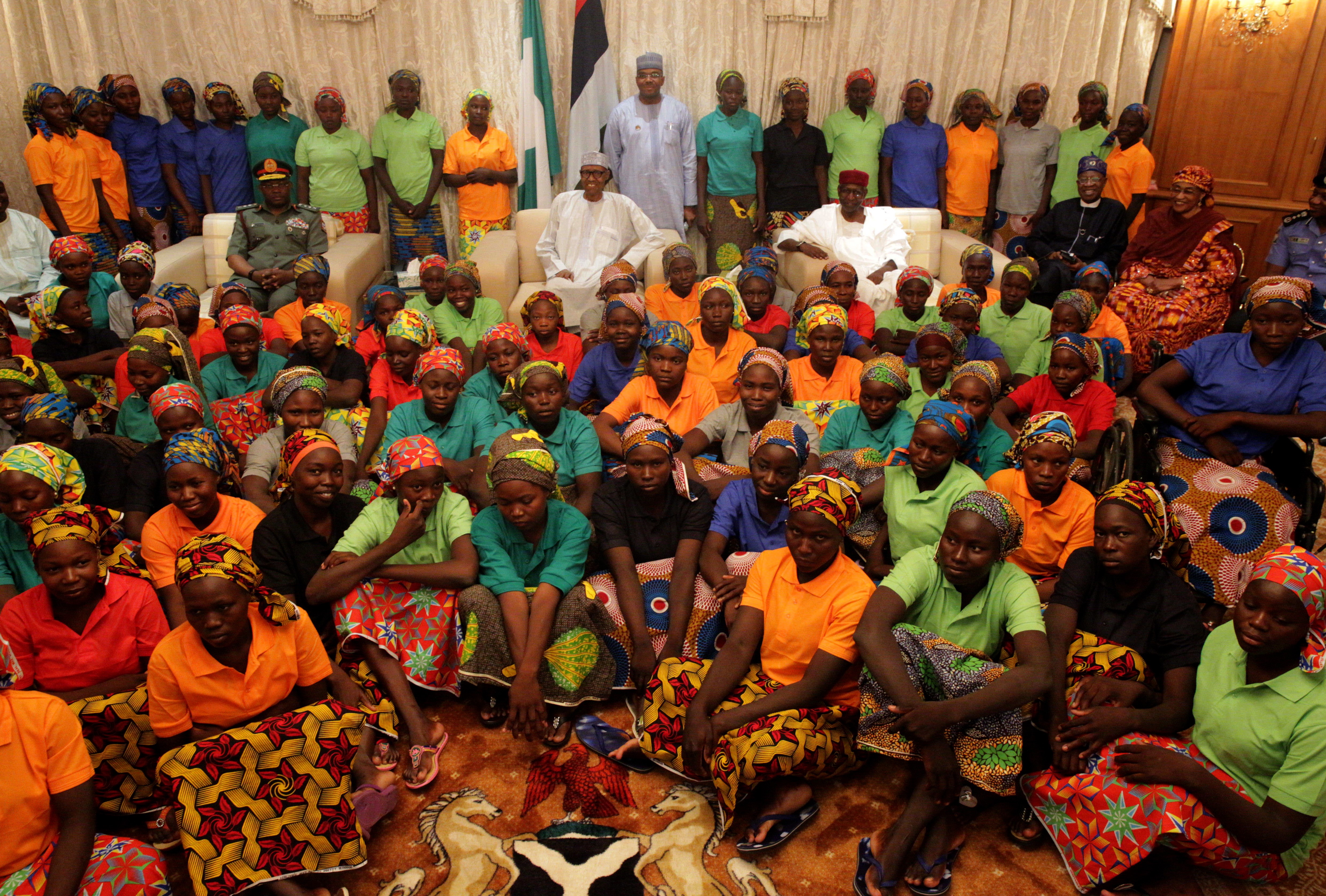I was in the CNN newsroom in Atlanta on April 15, 2014, when I first heard that hundreds of girls had been taken from a boarding school in northern Nigeria. None of it made much sense. Details were muddled, numbers fluctuated, and the statements coming from various government officials only added to the confusion. I rang my mother quickly in Sierra Leone, in keeping with my habit of calling her to discuss everything of significance in my life and the wider world.
“Did you hear about the kidnapped girls?” I asked once she finally picked up.
“Yes! They’re saying Boko Haram took them.” She sounded incredulous.
“Uh-huh, unbelievable that this could be allowed to happen.”
The overseas phone line hummed quietly as we both held silent for a moment, absorbing the injustice at the heart of it all.
The targeting of women and girls trapped in hot spots has long been an ugly characteristic of global conflicts. When men clash, the borders of their battlefields regularly extend to include the bodies of females. It barely raises eyebrows these days to hear that women caught up in hostilities have been abused, bought, swapped, or completely destroyed at will.
During World War II, some 200,000 women from countries that Japan occupied were forced to provide “comfort” to the invading Japanese soldiers. Hostilities in Rwanda and Bosnia, and the unending conflicts in the Democratic Republic of Congo, have produced tens of thousands of stories about wholesale female suffering. In Syria, ISIS established slave auctions to buy and sell women and girls from Iraq’s minority Yazidi sect. Girls as young as nine were traded for rape and enslavement. In August 2017, world leaders watched Myanmar’s security forces lay siege to the Rohingya community in the country’s Rakhine State. Staggering brutality and destruction drove close to 700,000 Rohingya across the border into Bangladesh. Almost immediately, stories of systematic rape and sexual assault began to emerge, and those soon numbered in the thousands, all of them brushed aside by Myanmar’s military, which continues to deny the widespread atrocities.
The perpetrators of this kind of wholesale violence against women and girls know that their chances of being held accountable are low to nonexistent. They are all too aware of the fact that provisions afforded to women to keep them safe during periods of armed conflict are weak, and actual enforcement of the law has been the exception rather than the rule. As Kelly D. Askin points out in her article “Prosecuting Wartime Rape and Other Gender-Related Crimes under International Law,” published in the Berkeley Journal of International Law in 2003:
Women and girls have habitually been sexually violated during wartime, yet even in the twenty-first century, the documents regulating armed conflict either minimally incorporate, inappropriately characterize, or wholly fair to mention the crimes. . . .
The progress made globally in recognizing, prohibiting, and finally enforcing gender-related crimes has been painstakingly slow.
The root of the problem, Askin argues, is the centrality of men to the process of recognizing and prosecuting crimes of gender-based violence against women. The answer is the inclusion of more women.
Until the 1990s, men did the drafting and enforcing of humanitarian law provisions; thus, it was primarily men who neglected to enumerate, condemn, and prosecute these crimes. While males remain the principal actors in international (and domestic) fora, in recent years, women have broken through the glass ceiling and are changing the traditional landscape by securing high-level positions in international legal institutions and on international adjudicative bodies.
Like Askin, I’ve always believed that more women must move from the sidelines to the center of efforts to bring about accountability for crimes against women and girls. In the meantime, the perpetrators of such violence know that striking at the females in a community creates a wound so deep within the heart of every family that it may never heal. The result is that communities and ultimately societies are changed forever, which is, of course, the intended outcome.
This was the first of many conversations my mother and I would have about crimes perpetrated against women and girls, and about Boko Haram and its objections to girls’ being educated. By the time I hung up the phone, I was incensed. And I knew I would have to handle this story differently from all the others I’d covered. It was time to get to work.
From right there in Atlanta, I decided to make the story of the missing Chibok schoolgirls the primary focus of my daily news show, CNN NewsCenter. Our correspondent in Nigeria, Vladimir Duthiers, worked diligently to pin down what had happened in that faraway town the night the girls disappeared, but verifiable facts were hard to come by. A flurry of statements released by local and federal officials contradicted each other from one day to the next. It took more than a day to confirm that the number of girls missing was 276. On April 16, the director of defense information, Major General Chris Olukolade, announced the rescue of all “129 girls, except eight.” He followed up with a retraction the very next day after enraged Chibok parents exposed his lie. Every day produced more questions about what happened before, during, and after the attack on the Chibok girls’ school. And the biggest question of them all remained unanswered: Where were the girls?
After working for more than a decade in the broadcast news industry, I was aware of one of its most shameful secrets: Every day in Western newsrooms, news executives are making calculations, asking themselves consciously and subconsciously “Whose story matters?” and “How much screen time or how many column inches do they deserve?” In the United States, the travails and triumphs of white America tend to dominate the headlines, after which come stories of black and brown people. But they are still above black African women, who are arguably at the very bottom and consequently receive what most often amounts to “blink and you’ll miss it” coverage. Of course, in the face of a catastrophic occurrence like the abduction of hundreds of schoolgirls, the story rundown is inverted, and those at the bottom rise to the top. But even here, there’s a caveat: any increase in time and resources devoted to reporting on Africa is still predicated on whether anything else of perceived importance is happening on American soil at that particular moment.
The fact that not all lives are valued equally in the media was a painful lesson for me to learn on many levels, and it was a source of great disappointment to me as a journalist because I saw first-hand how these biases shape the way Western news organizations approach and cover stories about Africans and the continent itself.
In the immediate aftermath of the horrific Chibok kidnapping, CNN’s coverage was limited. In this instance, it was hampered by a lack of information and by the swirl of misleading statements, which back then were simply dubbed “false narratives,” but in the era of the Trump presidency would be called out as “fake news.” But thanks to a handful of dedicated CNN journalists, the network remained committed to the Chibok story, which likely came as a surprise to the administration of then-Nigerian president Good-luck Jonathan. The government’s strategy appeared to be one of withholding specifics of how things unfolded in Chibok and what was being done to reunite the girls with their families because, in the absence of details, this story would surely die. As they soon discovered, that was a grave miscalculation on their part.

Follow us here and subscribe here for all the latest news on how you can keep Thriving.
Stay up to date or catch-up on all our podcasts with Arianna Huffington here.


